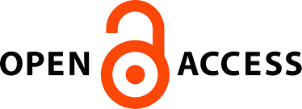Mostrar el registro sencillo del ítem
Improving spelling skills in kindergarteners through Jclic activities
| dc.contributor.advisor | Cruz Corzo, Carolina | |
| dc.contributor.author | Cadena Méndez, Dania Magaly | |
| dc.contributor.author | Leguizamón Espitia, Yolanda | |
| dc.date.accessioned | 2012-07-27T15:29:56Z | |
| dc.date.available | 2012-07-27T15:29:56Z | |
| dc.date.created | 2010 | |
| dc.date.issued | 2012-07-27 | |
| dc.identifier.citation | Ausubel, D. (1968). Educational psychology: A cognitive view. New York: Holt, Rinehart & Winston. | |
| dc.identifier.citation | Beatty, K. (2003). Teaching and researching computer-assisted language learning. England: Pearson Education. | |
| dc.identifier.citation | Beech & C. Singleton (Eds). The psychological assessment of reading. London: Routledge.Bissex, G. (1980). Gnys at wrk. Cambridge, Mass: Harward University Press | |
| dc.identifier.citation | Brown, D. (2007). Principles of language learning and teaching. United States of America: Pearson Education. | |
| dc.identifier.citation | Bryant, P. (2002). Children’s thoughts about reading and spelling. Scientific Studies of Reading. | |
| dc.identifier.citation | Burns, A. (1999). Collaborative action research for English language teachers. Cambridge: Cambridge University Press. | |
| dc.identifier.citation | Chambers, G.N. (1999). Motivating Language Learners. Clevedon: Multilingual Matters. | |
| dc.identifier.citation | Ehri, L. (1989). Development of spelling knowledge and its role in reading acquisition and reading disabilities. Journal of Learning Disabilities. | |
| dc.identifier.citation | Evmenova, Hopfengardner, Jeffs and Rider (2006). An action research study of computerassisted instruction within the first grade classroom. Assisted Technology Outcomes and Benefit. A joint publication of the Assistive Technology Association (ATIA) and the Special Education Assisted Technology (SEAT) Center. Vol. 3, Num. 1. Fall 2006.Retrievedfrom:http://www.atia.org/files/public/ATOBV3N1.pdf#page=80 | |
| dc.identifier.citation | Ford, M. (1992). Motivating Humans: Goals, Emotions and Personal Agency Beliefs. Newbury Park, CA: Sage | |
| dc.identifier.citation | Gardner, R. C. 1985 Social psychology and second language learning. The role of attitudes and motivation. Edward Arnold, London | |
| dc.identifier.citation | Gentry, J.R. & Gillet, J.W. (1993).Teaching kids to spell. Portsmoth, NH:Heinemann. | |
| dc.identifier.citation | Graham, S. (2000). Should the natural learning approach replace spelling development?. Journal of Educational Psychology. | |
| dc.identifier.citation | Helman, L. (2004). Building on the sound system of Spanish: insights from the alphabetic spellings of English-language learners. The Reading Teacher. | |
| dc.identifier.citation | Jiménez, S., Luna, M & Marin, M. (1996). Action Research guide. COFE Series. | |
| dc.identifier.citation | Kemmis, S. and McTaggart. (1985). The Action Research Planner. Victoria: Deakin University Press. | |
| dc.identifier.citation | McCombs, B. L. and J. E. Pope (1994). Motivating hard to reach students. Washington, DC: American Psychological Association | |
| dc.identifier.citation | Moats, L.C. (1995). Spelling: development, disability and instruction. Baltimore: York Press | |
| dc.identifier.citation | Moseley, D. (1997). Assessment of spelling and related aspects of written expression. In. J.R. | |
| dc.identifier.citation | Lee, Y. & Vail, C.O. (2005). Computer-based reading instruction for young children with disabilities. Journal of Special Education Technology, 20 (1), 5-17 | |
| dc.identifier.citation | Richards J.C. & Lockhart Ch. (1994). Reflective teaching in second language classrooms. United States of América: Cambridge University Press. | |
| dc.identifier.citation | Rost, M. Generating Student Motivation. Series Editor of WorldView. Retrieved from: http://www.pearsonlongman.com/ae/worldview/motivation.pdf | |
| dc.identifier.citation | Sagor, R. (2000). Guiding school improvement with action research. | |
| dc.identifier.citation | Seliger, H and Shohamy, E. (2001). Second language research methods. Hong Kong: Cambridge University Press. | |
| dc.identifier.citation | Shilling, M. G.V. (2006). Learner training, attitudes and motivation. Exploring one route to a better learner: An investigation into the effects of learner training on young adults learning English as a foreign language. German: Bayreuth University. Retrieved from: http://www.freidok.uni-freiburg.de/volltexte/6248/pdf/Learner_Training.pdf | |
| dc.identifier.citation | Simic, M. R (1993). Guidelines for computer - assisted reading instruction (Eric Digest No. 79). Retrieved from: http://www.indiana.edu./~reading/ieo/digest/d79.html | |
| dc.identifier.citation | Smith, F. (1975). Comprehension and learning: A conceptual framework for teachers. New York: Holt, Rinehart & Winston. | |
| dc.identifier.citation | Tangel, D.M. & Blachman, B.A. (1995). Effect of phoneme awareness instruction on the invented spelling of first-grade children: a one-year follow-up. Journal of Reading Behaviour. | |
| dc.identifier.citation | Warschauer, M. and Healey, D. (1998). Computers and Language Learning: an overview. Language Teaching 31: 51-7. | |
| dc.identifier.citation | Westwood, P. (1994). Issues in spelling instruction. Special Education Perspectives. Second edition. Australian Council for Educational Research: ACER Press | |
| dc.identifier.citation | Westwood, P. (2003). Common sense methods for children with special needs. Fourth edition. London: Routledge - Falmer | |
| dc.identifier.citation | Westwood, P. (2005). Spelling approaches to teaching and assessment. Second edition.Australian Council for Educational Research: ACER Press | |
| dc.identifier.citation | Wlodkowki, R. J. (1986). Enhancing Adult Motivation to Learn. San Francisco, CA: Jossey – Bass. | |
| dc.identifier.citation | Zonaclic (May, 2008). Educative software JCLIC: A support in the learning process. Available in: http://clic.xtec.net/es/Jclic/info.htm | |
| dc.identifier.uri | http://hdl.handle.net/10818/3194 | |
| dc.description | 99 Páginas. | |
| dc.description.abstract | Este documento reporta un proyecto de acción-investigación llevado a cabo en el Liceo Patria. El objetivo principal de la investigación era analizar como la implementación de actividades diseñadas en el programa educativo jclic ayudaría a mejorar la ortografía en un grupo de transición a lo largo de doce sesiones. Los instrumentos usados para colectar los datos fueron: encuestas, diario del docente, registros y pruebas, Para analizar los datos, se siguió el método de análisis de tendencias de Sagor. Los resultados del estudio muestran que la precisión en la ortografía es alcanzada a través de un proceso de aprendizaje sistemático. Además, se evidencia como el programa educativo jclic contribuye al desarrollo de la ortografía y diseñó actividades motivadoras para el estudiante. | es_CO |
| dc.language.iso | spa | es_CO |
| dc.publisher | Universidad de La Sabana | |
| dc.source | Universidad de La Sabana | |
| dc.source | Intellectum Repositorio Universidad de La Sabana | |
| dc.subject | Inglés | es_CO |
| dc.subject | Lenguaje y lenguas | es_CO |
| dc.subject | Métodos de enseñanza | es_CO |
| dc.subject | Investigación acción en educación | es_CO |
| dc.title | Improving spelling skills in kindergarteners through Jclic activities | es_CO |
| dc.type | masterThesis | |
| dc.publisher.program | Maestría en Didáctica del Inglés con Énfasis en Ambientes de Aprendizaje Autónomo | |
| dc.publisher.department | Departamento de Lenguas y Culturas Extranjeras | |
| dc.type.local | Tesis de maestría | |
| dc.type.hasVersion | publishedVersion | |
| dc.rights.accessRights | openAccess | |
| dc.creator.degree | Magíster en Didáctica del Inglés con Énfasis en Ambientes de Aprendizaje Autónomo |











